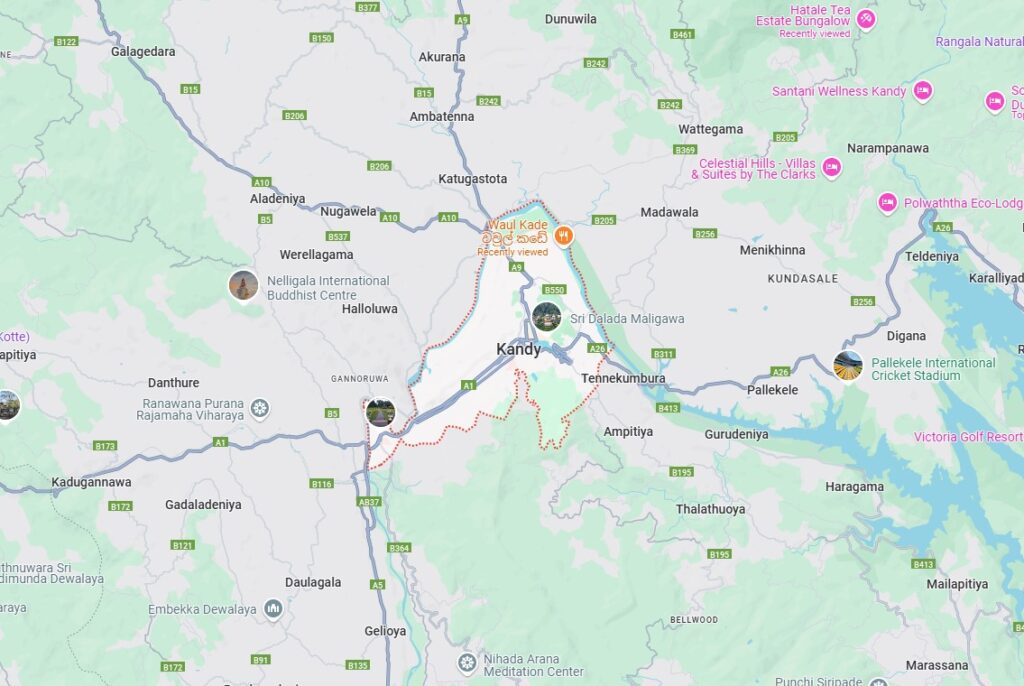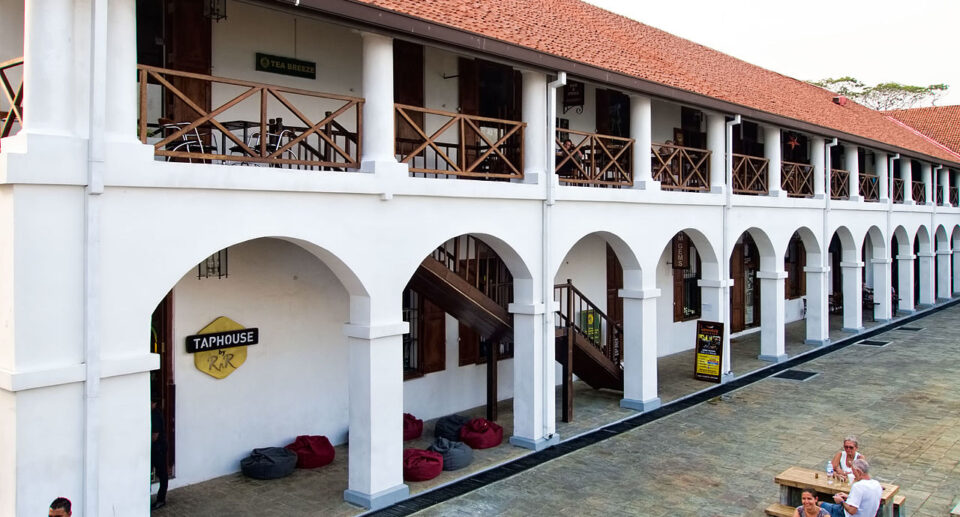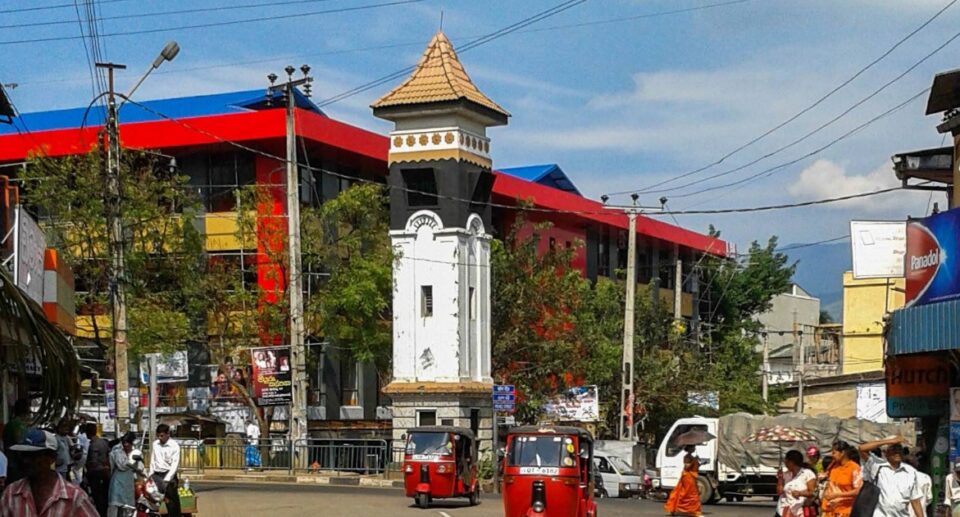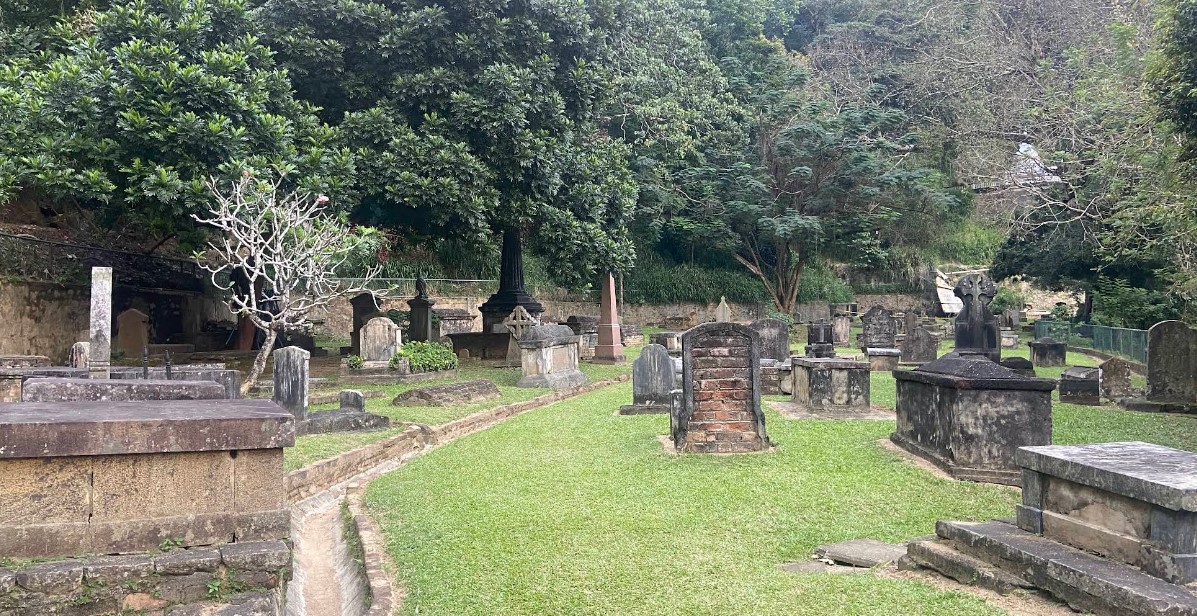Kandy City: The Cultural and Spiritual Heart of Sri Lanka
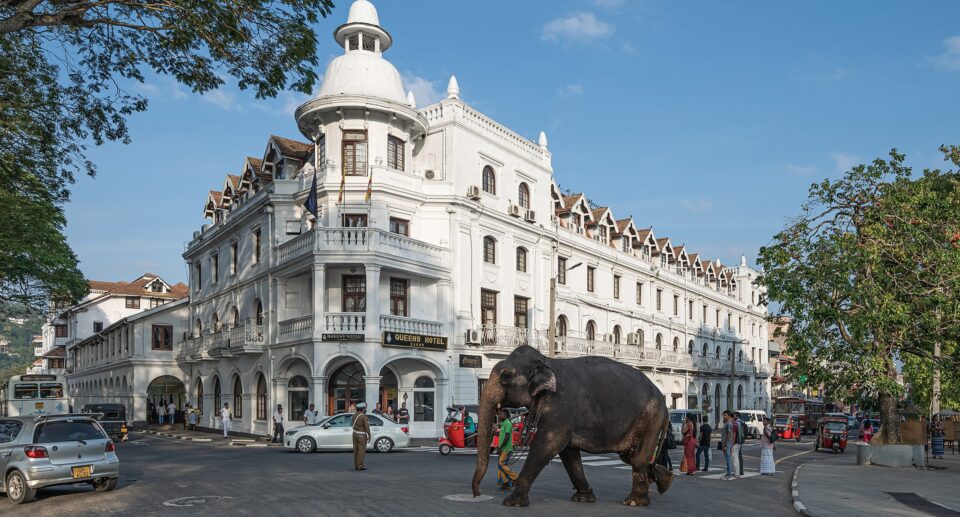
Plaited within green hills within the country’s central area is Kandy, one of Sri Lanka’s dearest cities—it’s filled to the brim with culture, history, spiritualism, and nature. While it is Sri Lanka’s former royal capital as well as the world’s other heritage city outside Europe, Kandy remains very highly regarded by locals and foreigners alike.
Historical Significance
The history of Kandy goes back to the 14th century but turned into a national one during the 15th and 16th centuries as the capital of the Kingdom of Kandy. The kingdom was powerful at a time when most of the island had been under Portuguese and then Dutch colonial rule. The Kandyans fought hard to preserve their independence with the support of the city’s location in the mountains and the commitment of its rulers and people.
One of the most important of Kandy’s historical roles was as the last remaining bastion of the Sinhalese monarchy before its conquest by British colonial forces in 1815. The signing of the Kandyan Convention in that year ended centuries of native rule and ushered in the period of British rule, which lasted until Sri Lankan independence in 1948.
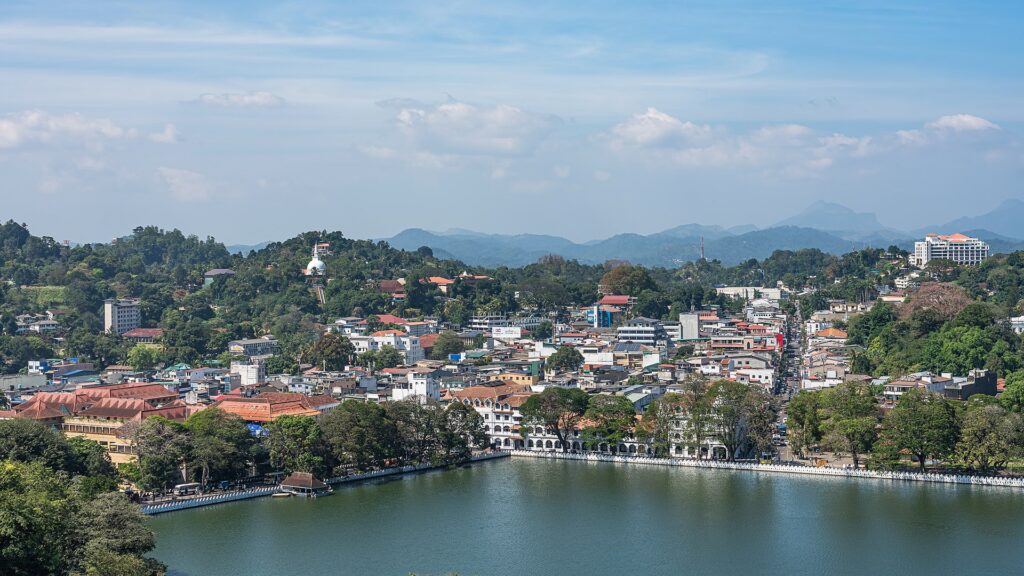
Dalada Maligawa: The Temple of the Sacred Tooth Relic
The Dalada Maligawa, Temple of the Sacred Tooth Relic, is among Sri Lanka’s and the Buddhist world’s holiest religious sites. The temple, located in the heart of Kandy, houses the Sacred Tooth Relic of the Buddha, a symbol of spiritual and national emblem. It has been a sacred pilgrimage site, culture symbol, and seat of royal authority for centuries.
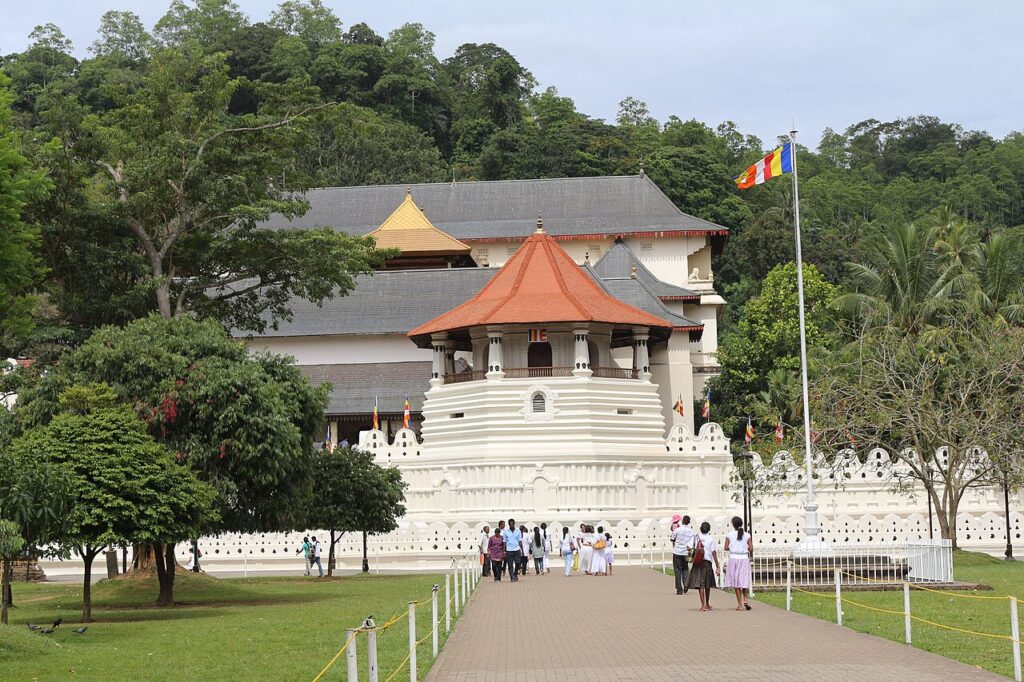
Historical Background
The Relic of the Sacred Tooth is reputed to be one of the actual teeth of Gautama Buddha, recovered from his funeral pyre in India. It was brought by Princess Hemamali and Prince Dantha, in the 4th century AD, to Sri Lanka, smuggling it in the hair of the princess to preserve it from war in India.
Over the centuries, the relic had also become a symbol of political power and legitimacy. Whoever possessed the Tooth Relic was said to have divine right to govern the island. It followed that it was passed from city to city, kept safely in the care of successive kingdoms and kings, including Anuradhapura, Polonnaruwa, Dambadeniya, and Gampola, before finally being fixed in Kandy in the late 16th century.The temple was constructed by King Vimaladharmasuriya I in the early 1600s as Kandy had become the island’s last free state capital.
Architecture and Design
Dalada Maligawa is a marvel of architecture that displays Kandyan elegance. The compound of the temple is part of the royal palace, which sets out its twofold status as a center of religion and politics. It has:Octagonal Pavilion (Paththirippuwa): That which was originally used for royal receptions now serves as a library to store palm-leaf manuscripts.
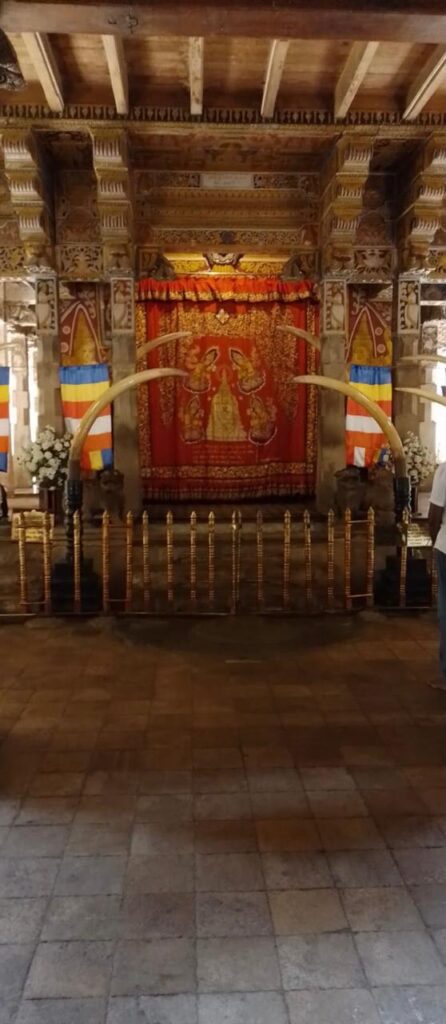
Moat and Stone Wall: These defensive elements ring the temple and add to its regal appearance.Main Shrine Room (Inner Chamber): There rests enshrined the Sacred Tooth in a casket of gold, guarded further by a hierarchy of caskets stacked within one another. The relic itself is not readily visible but is greatly revered.
Golden Canopy: Sits atop the relics’ chamber, symbolizing the sanctity of the shrine.Alut Maligawa: A new shrine hall with beautiful murals and statues, where various religious activities are conducted.Drumming Hall (Hevisi Mandapaya): Drumming here is carried out as ritualistic offering to the relic, in the traditional “hevisi” fashion.The temple is decorated with fine wood carvings, murals, gold plating, and ivory, which symbolize the sanctity and importance of the location.
Religious and Cultural Significance
Dalada Maligawa is not just a place of worship but also a living symbol of Sri Lankan Buddhism. Individuals from all over the world come to pray and seek blessings. Daily ceremonies known as “Thevava” are conducted by monks thrice daily: morning, noon, and evening. These include offerings of incense sticks, flowers, and prayers.
The temple is also in the center of the Esala Perahera every year, which is among Asia’s largest Buddhist festivals. As part of the procession, a replica of the Sacred Tooth Relic is taken around the streets of Kandy on a lavishly decorated elephant by traditional dancers, drummers, whip crackers, torch bearers, and ceremonial-clad Kandyan chieftains. The Perahera draws thousands of local and international tourists annually and showcases the rich cultural heritage of Sri Lanka.
Esala Perahera: The Grand Festival of Kandy
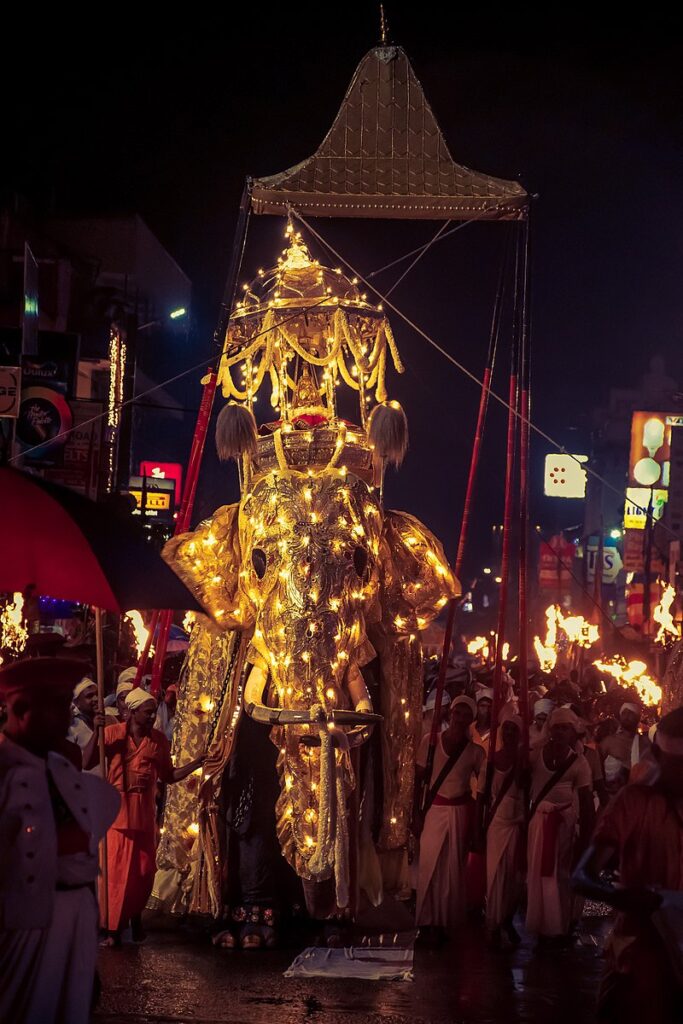
The Esala Perahera, which is also referred to as the Kandy Perahera or the Festival of the Sacred Tooth, is one of the most spectacular and spiritually meaningful festivals that can be discovered in Sri Lanka, and, indeed, one of the oldest Buddhist festivals on the planet. Celebrated annually in Kandy, this brilliant festival is presented to the Sacred Tooth Relic of the Buddha, which is housed in the Dalada Maligawa (Temple of the Sacred Tooth Relic).
This age-old festival is a dazzling display of devotion, culture, tradition, and craftsmanship, attracting thousands of pilgrims and visitors from all over the world.
Historical Background
The Esala Perahera has its roots in the 3rd century BCE, during the reign of King Devanampiya Tissa, soon after Buddhism was brought to Sri Lanka. In its very early forms, it was connected with a festival to call for rain and fertility in the month of Esala (July/August).
The festival, as we are able to witness today, however, came into being in the form it now takes place under the Kandyan Kingdom primarily during the reign of King Kirthi Sri Rajasinghe in the 18th century. He merged the ancient tradition of the Esala festival with the Sacred Tooth Procession, eventually connecting Buddhist religious practice with the authority of the king.
To this day, the Esala Perahera continues to reflect this heritage, blending religious devotion with regal pageantry.
Geographical Setting and Natural Beauty
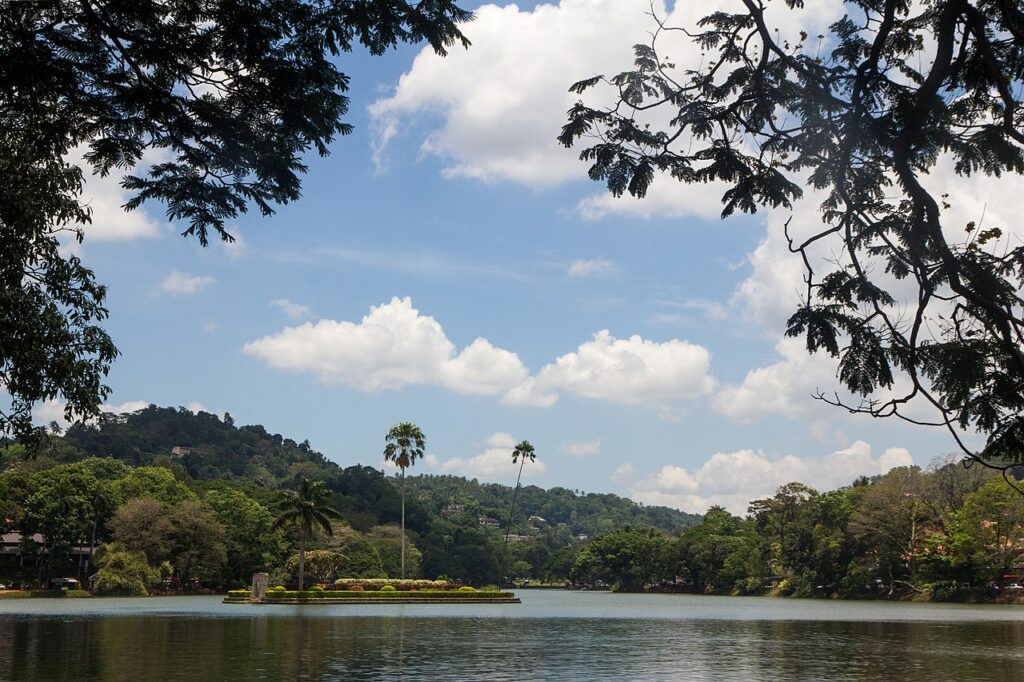
The geographical beauty of Kandy lies in its placement in the central highlands of Sri Lanka, surrounded by misty hills, dense forests, and tea plantations. The city runs along the shores of the Kandy Lake, an artificial lake constructed in 1807 by King Sri Wickrama Rajasinghe. This peaceful body of water is a calming focal point within the city, ideal for walking and birdwatching.
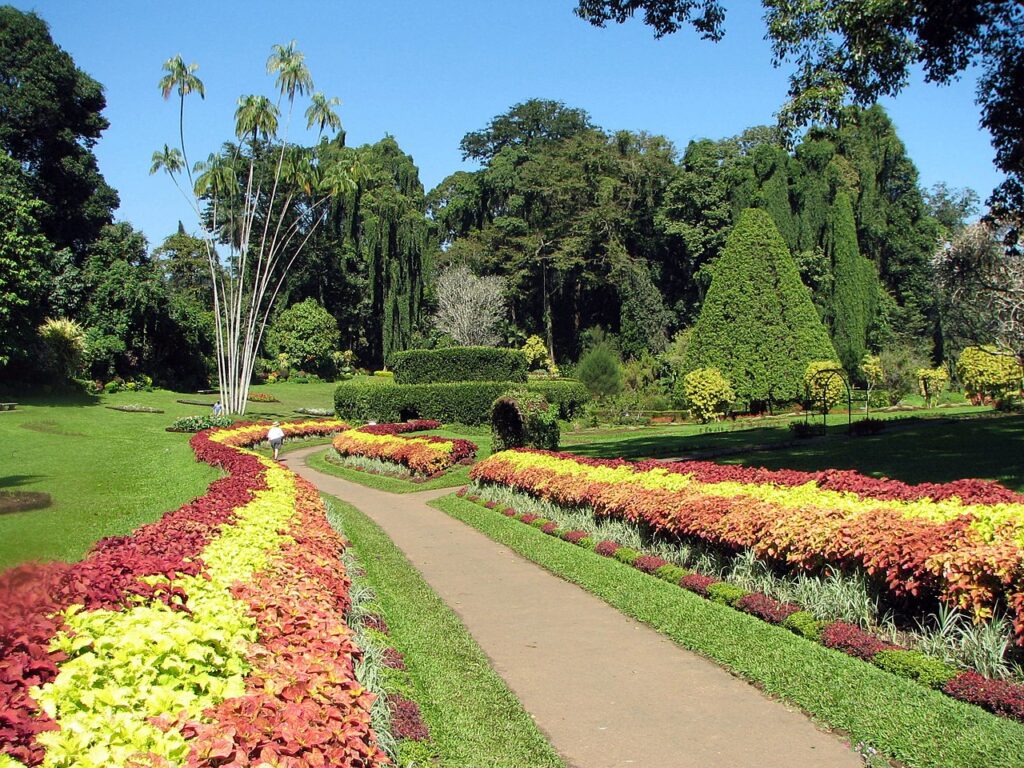
Close to the city are lush botanical gardens, rolling hills, and scenic trails. The Peradeniya Botanical Gardens, located just a few kilometers from Kandy, is the largest botanical garden in Sri Lanka, home to more than 4,000 species of plants, including orchids, medicinal herbs, and palm trees.
In 1821, British botanist Alexander Moon began laying out the garden as a place for cultivating cinnamon and other valuable crops. It was officially established in 1843 with plants brought from Kew Gardens in England, Slave Island in Colombo, and the Kalutara garden. Since then, it has evolved into a world-renowned institution, combining colonial-era landscaping with tropical biodiversity.
Architecture and Urban Layout
The Kandy architecture is a combination of colonial, Kandyan, and modern styles. The influence of the Kandyan Kingdom can be seen in Temple of the Tooth and the adjacent royal palace complex, with white walls, tiled roofs, and carved wooden motifs.
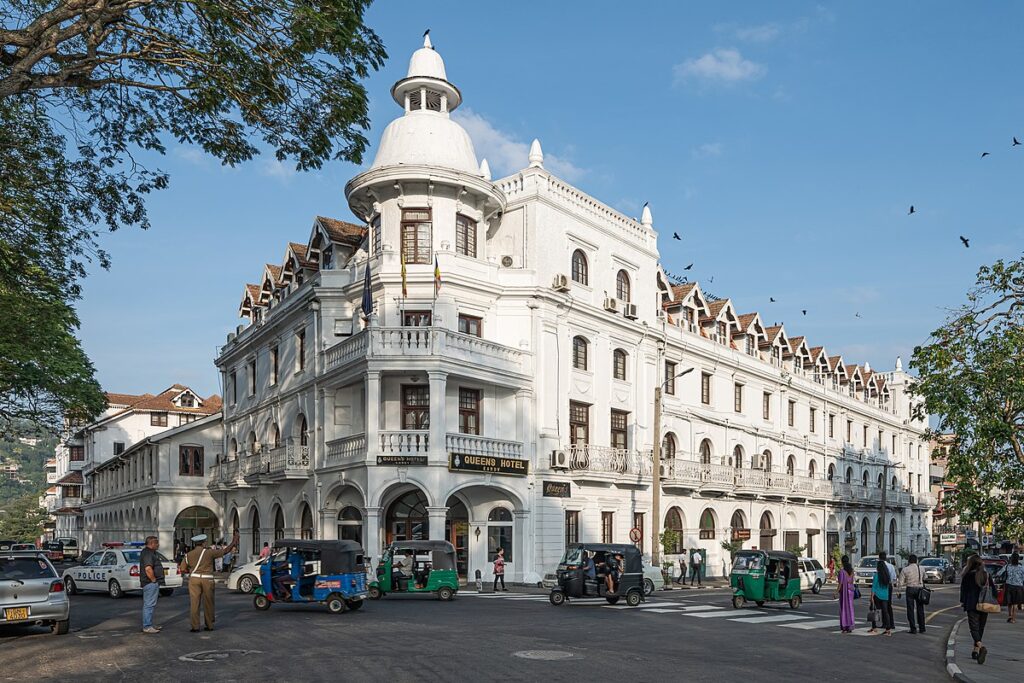
The British colonial influence has left its mark as well. The Queens Hotel, Kandy Railway Station, and the British Garrison Cemetery are all colonial-style structures and part of the historical heritage of the era.
Modern-day Kandy is a mix of tradition and development. Central parts of the city still retain their old-world charm, but outer areas are abounding with markets, schools, hospitals, and commercial centers.
Education and Institutions
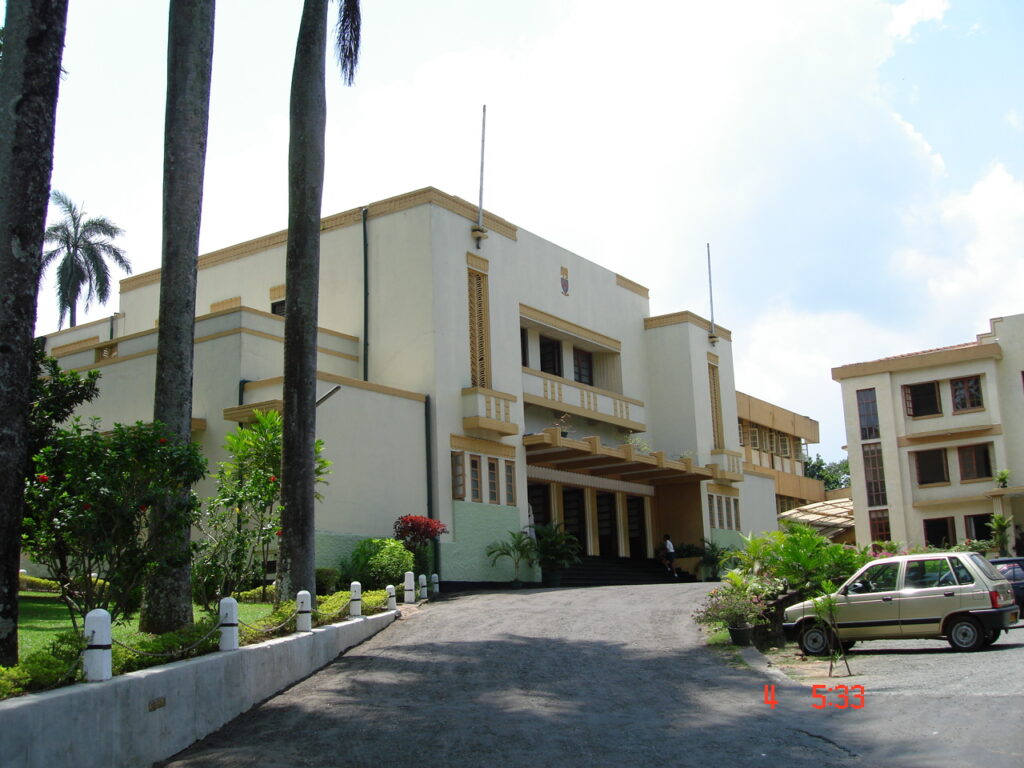
Kandy is also a center of education with some of the nation’s most elite schools and institutions. The University of Peradeniya, one of Sri Lanka’s finest universities, lies just outside the city and boasts an enormous, picturesque campus. It’s famous for its faculties of arts, science, engineering, and medicine, and is a dominant presence in Sri Lankan tertiary education. Additionally, Kandy hosts some of the country’s most well-known secondary schools such as Trinity College, Kingswood College, and Hillwood College, each with a proud tradition and service to education in Sri Lanka.
Local Life and Culture
The everyday life in Kandy is slower and more traditional than in Sri Lanka’s major cities such as Colombo. The markets are lively, with spices, fresh fruits and vegetables, handicrafts, and batik fabrics. Street stalls offer local street food such as “kottu roti,” “hoppers,” and sweet treats, making the air smell and look enticing.
Traditional dances such as the Kandyan dance continue to thrive. Such performances, usually undertaken with ceremonial drumming, constitute a very dynamic expression of Sri Lanka’s historic cultural traditions. Cultural centers surrounding and close to Kandy offer regular nightly shows for locals as well as international visitors, causing such traditions to live on.
Tourism and Attractions
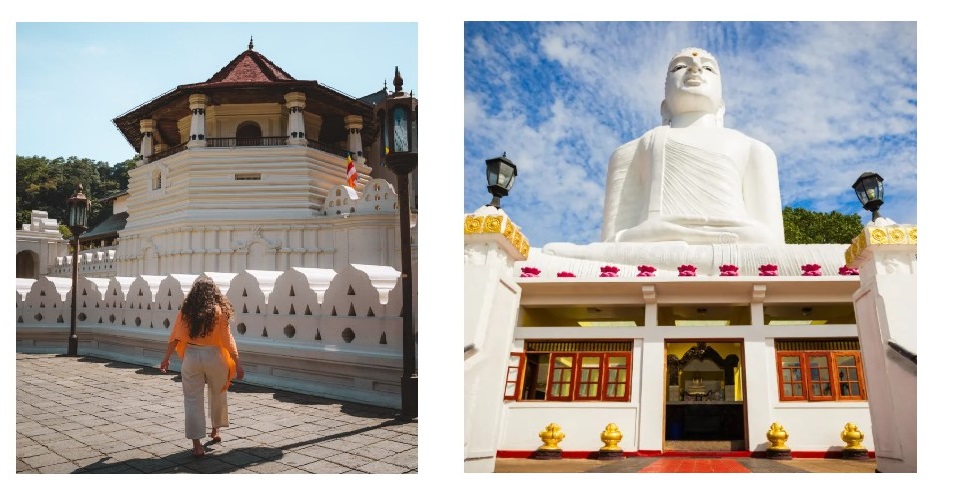
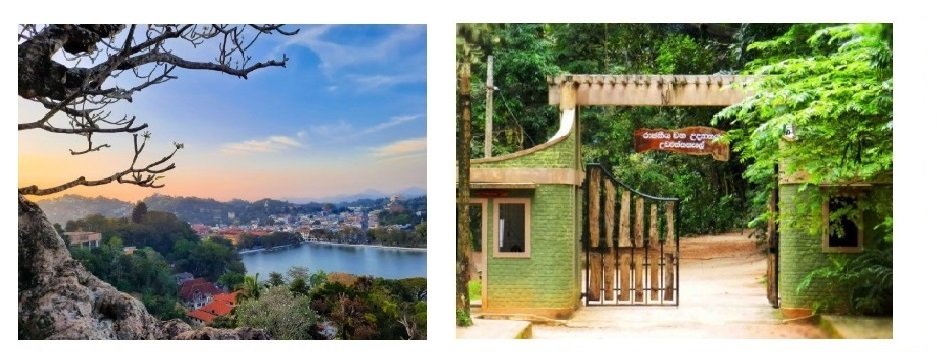
Tourism is the backbone of Kandy’s economy. In addition to the Temple of the Tooth and the Esala Perahera, there is much more to see in the city:
Bahirawakanda Vihara Buddha Statue: A giant white Buddha statue on the top of a hill with beautiful views of the city. Udawattakele Forest Reserve: An oasis in the heart of the city, where birds, monkeys, and old hermitages exist. Kandy Viewpoint: This is along Rajapihilla Mawatha and offers one of Kandy Lake’s finest views with a cityscape in the background. Ceylon Tea Museum: In Hantana, the museum chronicles the history of Sri Lanka’s tea industry in terms of its economic as well as its cultural impact.
The Kandy City Centre (KCC)
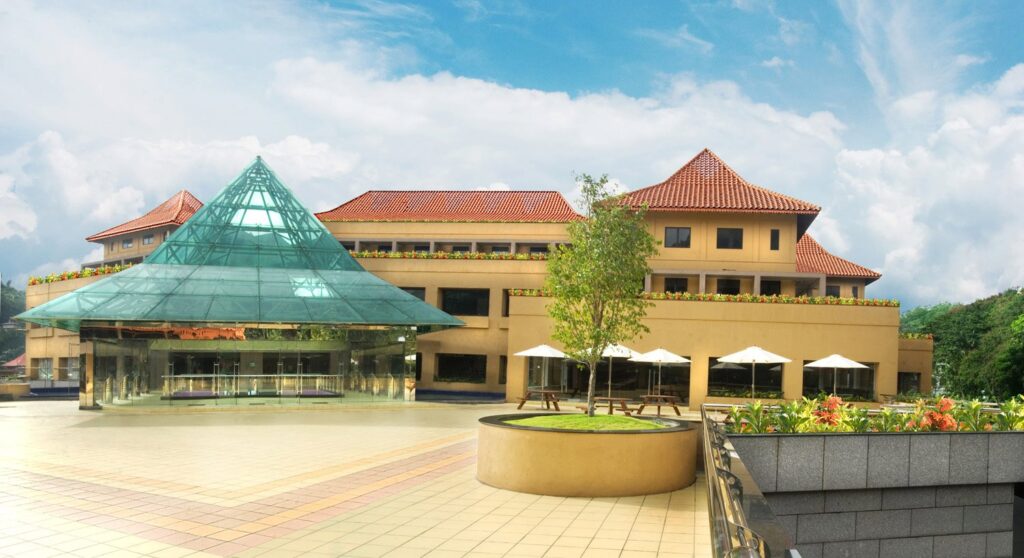
Kandy City Centre is a ten-storey complex that includes retail, dining, banking, and entertainment amenities. Property Finance and Investments Kandy (Pvt) Ltd constructed the complex, with architectural design by AMC Architects of Singapore and ADV Consultants of Sri Lanka. The work started in 1993 and, after different phases, the centre was opened in December 2008.
Facilities and Features
Shopping Centers: KCC has over 60 shopping outlets, both foreign and local brands such as Nike, Levi’s, Giordano, Cotton Collection, and Hameedia. The consumers also receive Mallika Hemachandra Jewellers, Colombo Jewellery Stores, and Stone ‘N’ String for classy jewelry.
Dining and Food Court: The complex features a multi-cuisine food court that boasts a panoramic view of the Kandy Lake. Options range from local cuisine to international, which serves to accommodate different tastes.
Entertainment Zone: KCC features an entertainment zone, including a Virtual Reality Game Zone and a children’s carousel, so the complex proves to be an appropriate place to visit for the family.
Banking and Services: Some of the leading banks have their offices within the complex, providing instant financial services. Facilities such as a supermarket, bookstore, and perfumeries are also available.
Parking: A five-story car park facility, owned by the Kandy Municipal Council, is located close to the centre, which offers sufficient parking space for parking the visitors.
Map of Kandy City
